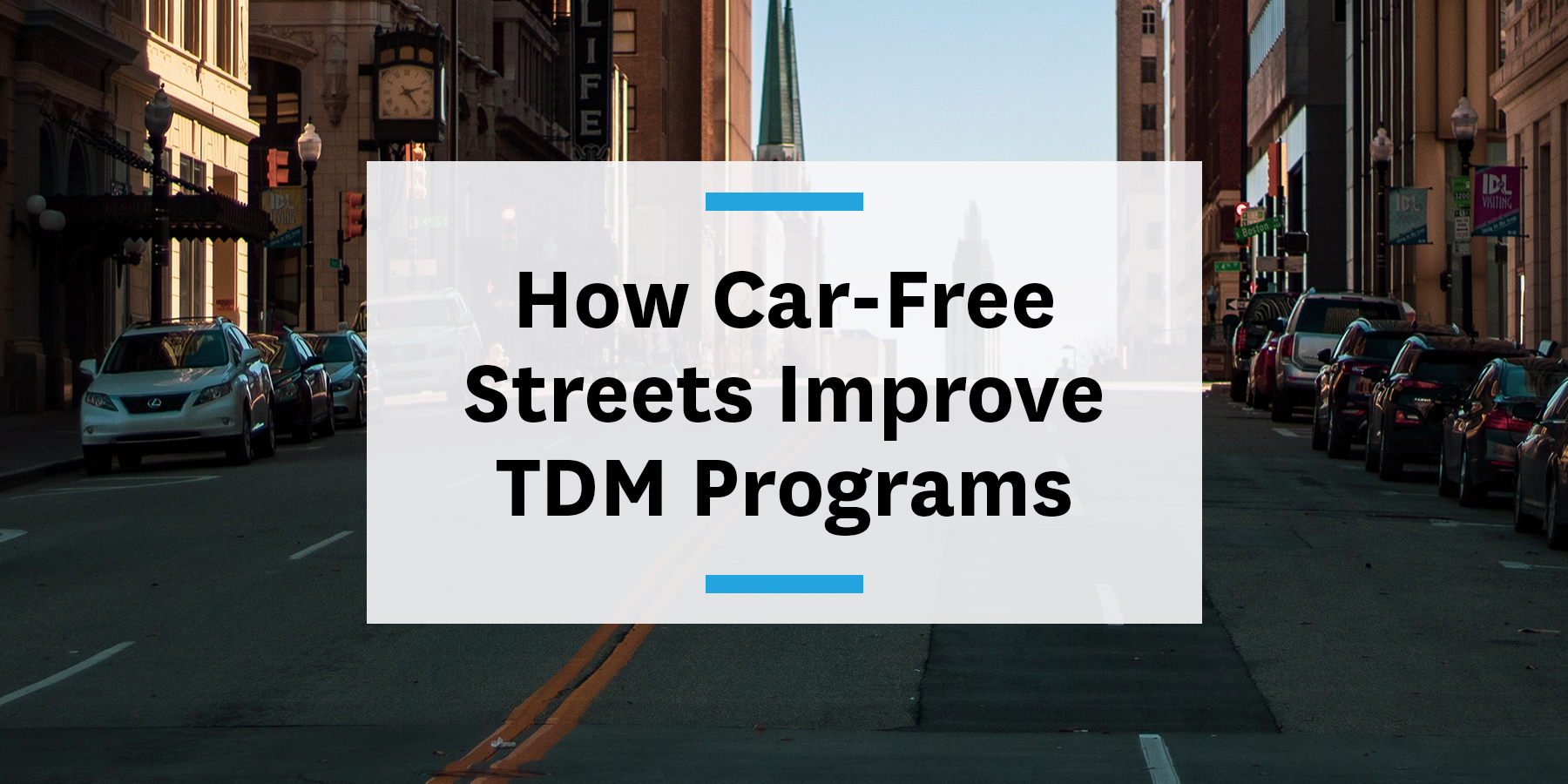Earlier this month, San Francisco made headlines by banning cars on one of its busiest streets. It isn’t the first city to implement this change, but it is the most recent. Of course, changes of this magnitude will bring a lot of concern from NIMBYs, but from the videos we’ve seen, traveling on Market Street sans cars looks pretty awesome.

Now that New York and San Francisco have banned cars on some of their busiest streets and seeing positive impacts, we have a feeling more cities will follow suit. In fact, a council member in Los Angeles has already presented a car-free stretch on Broadway! Now that this is becoming a trend, we wanted to highlight how car-free streets affect not only commuters, but businesses and developers as well.
The commuter
Car-free streets require a commute adjustment for everyone. Yes, drivers may need to update their routes slightly, but based on New York’s car-free 14th Street, it won’t be that big of a change. After the city banned cars on the busy thoroughfare, speeds on parallel streets showed little to no significant declines, according to a study by Intrix. You know what got faster? The buses running on 14th Street! Travel times decreased by 30 percent while ridership increased. These improvements occur on both weekdays and weekends alike.
In addition to buses traveling faster, cyclists, walkers, and scooters get more space on the road. When streets are rid of cars for extended periods of time, people feel more comfortable conducting everyday travel business, whether it’s commuting or simply running errands via bicycle.
The employer
Car-free streets don’t just benefit the individual commuter, but employers as well. Most notably is when it comes to commuter benefits programs. When employees have the opportunity to adopt new commutes, employers have the opportunity to expand their offerings. For example, if employees feel safer bicycling to work, employers can help them by providing a partially- or fully-subsidized bikeshare membership. Or they can help their employees buy a personal bike.
Car-free streets also help employers with TDM programs. In a city like Seattle, where there are strict TDM requirements for employers, a car-free street helps immensely. That’s why the city increased their car ban on 3rd Avenue from 6.5 hours to 13.5 hours during the day, leaving even more room for buses and cyclists.
From that point, employers have even more of an opportunity to help their employees change their commutes. By offering to pay for bus passes or help with biking to work (as we mentioned above), employers can easily reach their TDM requirements.
The developer
San Francisco’s TDM requirements rest heavily on the city’s property developers. Its SWIFT program, provides a menu of options to pick from to hit their TDM point total and get building approval.
So what does that have to do with car-free streets? Well, with no cars on the road, a lot of curb space is opened up for additional bicycle parking. Another menu option in the SWIFT program is creating more walking space. When cyclists have open streets, sidewalks open up, and pedestrians inevitably have more space. A third menu option is curb space for delivery vehicles — yet again an example of something easy to achieve thanks to car-free streets.
The population
Banning cars on busy streets isn’t just about the street itself. It’s about the sidewalks that get cleared up. It’s about the sense of feeling safe when you are on your way to work or on your way to pick up your kids. With fewer personal vehicles on the road, streets, sidewalks, and curbs become safer for everyone.




